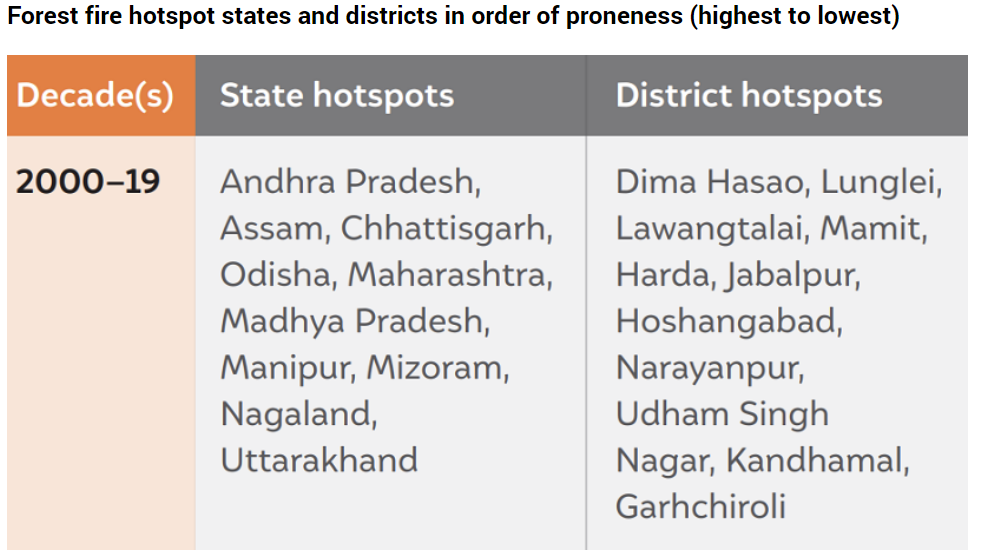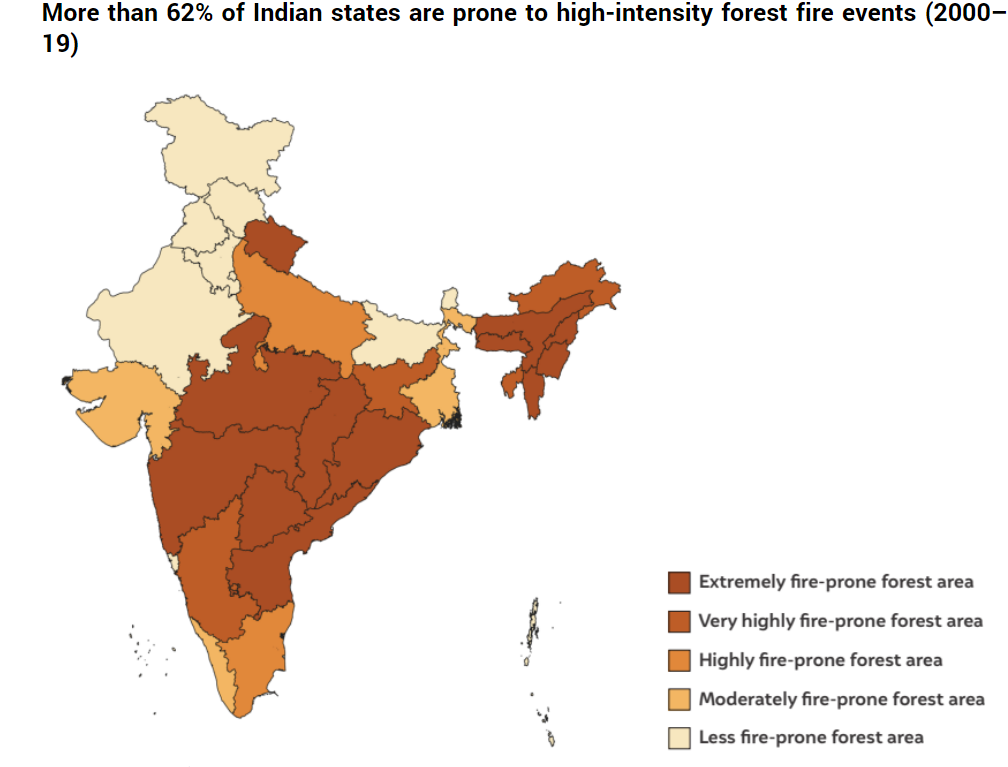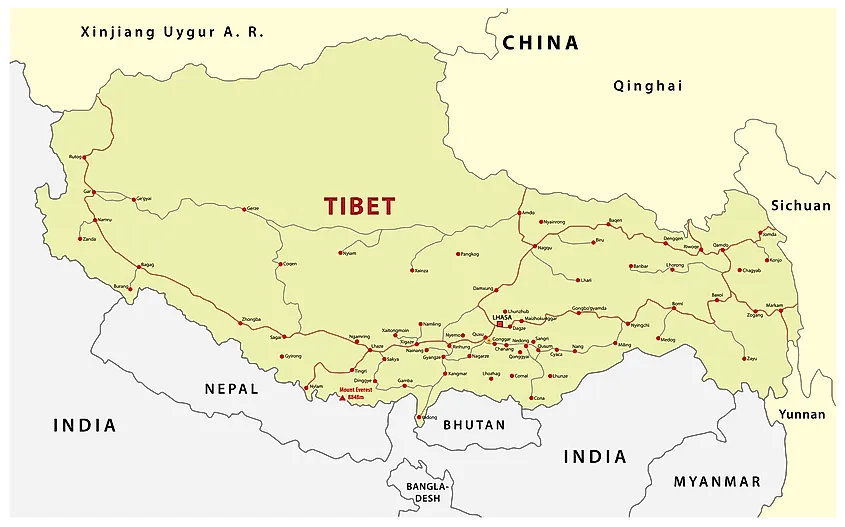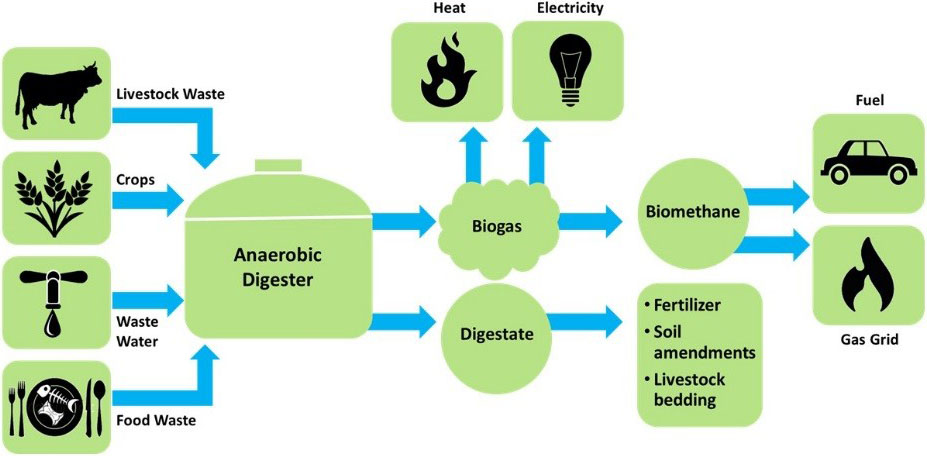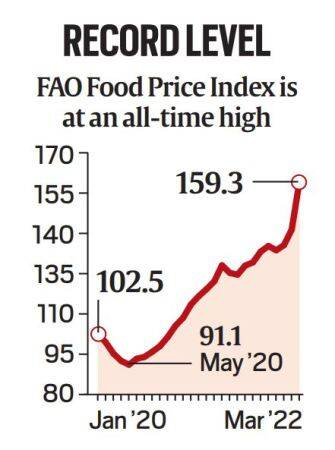Governance
SC Upheld FCRA Amendments
For Prelims: Foreign Contribution (Regulation) Act (FCRA), 2010
For Mains: Foreign Contribution (Regulation) Amendment Act (FCRA), 2020, Supreme Court Upheld FCRA Amendments, Non-Governmental Organisations (NGOs
Why in News?
Recently, the Supreme Court (SC) upheld the constitutional validity of the Foreign Contribution (Regulation) Amendment Act (FCRA), 2020.
- It held that receiving foreign donations cannot be an absolute right and can be regulated by the Parliament.
- In 2020, the Indian government had proposed amendments to the FCRA, which imposed new restrictions on how Non-Governmental Organisations (NGOs), individuals, and other organisations could receive or use funds contributed from abroad.
What are the Highlights of the Judgements?
- Medicine vs Intoxicant Metaphor: Foreign Contributions serves as a medicine so long as it is consumed (utilised) moderately and discreetly.
- However, free and uncontrolled flow of foreign contribution can act as an intoxicant that has the potential of impacting the sovereignty and integrity of the nation.
- Imposing Political Ideology: The SC underlined that foreign contributions may tend to influence or impose political ideology.
- Thus, FCRA amendments are essentially conceived in the interest of public order as the intent is to prevent misuse of donations coming from foreign sources.
- Global Precedents: Receiving foreign donations cannot be an absolute or even a vested right.
- This is because the theory of possibility of national polity being influenced by foreign contribution is globally recognised.
- Upholding Legislation: In this scenario, it had become necessary for Parliament to step in and provide a stringent regime for effectively regulating the inflow and utilisation of foreign contribution.
What is Foreign Contribution (Regulation) Act (FCRA), 2010?
- Foreign funding of persons in India is regulated under FCRA act and is implemented by the Ministry of Home Affairs.
- Individuals are permitted to accept foreign contributions without permission of MHA.
- However, the monetary limit for acceptance of such foreign contributions shall be less than Rs. 25,000.
- The Act ensures that the recipients of foreign contributions adhere to the stated purpose for which such contribution has been obtained.
- Under the Act, organisations are required to register themselves every five years.
What were the Amendments done in the Act?
- Prohibition to accept foreign contribution: It bars public servants from receiving foreign contributions.
- Transfer of foreign contribution: It prohibits the transfer of foreign contribution to any other person.
- Aadhaar for registration: Aadhaar number is mandatory for all office bearers, directors or key functionaries of a person receiving foreign contribution, as an identification document.
- FCRA account: The foreign contribution must be received only in an account designated by the bank as FCRA account in such branches of the State Bank of India, New Delhi.
- No funds other than the foreign contribution should be received or deposited in this account.
- Restriction in utilisation of foreign contribution: It allowed the government to restrict usage of unutilised foreign contribution.
- This may be done if, based on an inquiry the government believes that such person has contravened provisions of the FCRA.
- Administrative Capping: While NGOs earlier could use up to 50% funds for administrative use, the new amendment restricted this use to 20%.
What are the Objectives and Issues Related to the Amendments?
- Objectives: Many recipients of foreign contribution have not utilised the same for the purpose for which they were registered or granted prior permission under the FCRA 2010.
- Recently, the Union Home Ministry has suspended licences of the six (NGOs) who were alleged to have used foreign contributions for religious conversion.
- Such a situation could have adversely affected the internal security of the country.
- It also aims to enhance transparency and accountability in the receipt and utilisation of foreign contributions and facilitate the genuine NGOs who are working for the welfare of society.
- Issues: The Amendments led to criticism from some quarters that it could have a deleterious effect on civil society organisations.
- The government aims to control the NGOs which engage in dubious activities.
- However, by failing to recognise the diversity of NGOs, which include world-class organisations that are recognised globally, will crush their competitiveness and creativity.
Way Forward
- NGOs are helpful in implementing government schemes at the grassroots. They fill the gaps, where the government fails to do their jobs.
- The government must stick to the ancient Indian ethos of Vasudhaiva Kutumbakam as the framework for its global engagement and should not act with vendetta against the NGOs who criticise its working.
Indian Economy
Monetary Policy Review: RBI
For Prelims: Standing Deposit Facility , RBI, Monetary Policy Committee (MPC), Instruments of Monetary Policy, Various Policy Stances of RBI
For Mains: Inflation Targeting by RBI, Monetary Policy,Standing Deposit Facility and its Significance
Why in News?
Recently, for the eleventh time in a row, the Reserve Bank of India (RBI) in its latest Monetary Policy review has decided to keep the main policy rate – Repo rate – unchanged at 4%.
- It has also retained its accommodative stance, but indicated it will engage in a gradual and calibrated withdrawal of surplus liquidity to rein in inflation.
What is the Significance of this Monetary Policy Review?
- Acknowledging the Impact of Russia-Ukraine War: In the wake of the rise in crude oil and commodity prices and the impact of the Russian invasion of Ukraine, RBI has slashed the growth forecast to 7.2% for fiscal 2022-23 from 7.8% projected earlier.
- The Russia-Ukraine war could potentially impede the economic recovery through elevated commodity prices and global spill-over channels.
- Standing Deposit Facility: The RBI also introduced a new measure, the Standing Deposit Facility — an additional tool for absorbing liquidity — to suck out surplus liquidity of Rs 8.5 lakh crore from the financial system which is fuelling inflation.
- Signalling Shift in Policy Stance: This Monetary Policy Review signals that the RBI has finally shifted its priorities to tackle inflation.
- Thus, there is a possibility of a hike in its key policy rate (Repo Rate) in the coming months.
- Further, RBI has hiked its inflation forecast from 4.5% projected earlier to 5.7% still below the upper band of 6% of the RBI’s target – in 2022-23.
- Resorting to Pre-pandemic Levels: RBI policy panel took a concrete step by restoring the policy rate corridor under Liquidity Adjustment Facility(LAF) to pre-pandemic width of 50 basis points.
- This is aimed at bringing down the inflationary pressures.
- LAF is a tool used in the monetary policy that allows banks to borrow money from the RBI through repurchase agreements (Repo) or to lend funds to the RBI through reverse repo agreement.
What is Standing Deposit Facility & Its Role?
- About: The RBI has introduced the Standing Deposit Facility (SDF), an additional tool for absorbing liquidity, at an interest rate of 3.75%.
- It is an additional tool for absorbing liquidity without any collateral.
- Background: In 2018, the amended Section 17 of the RBI Act empowered the RBI to introduce the SDF.
- Modus Operandi: By removing the binding collateral constraint on the RBI, the SDF strengthens the operating framework of monetary policy.
- The SDF is also a financial stability tool in addition to its role in liquidity management.
- The SDF rate will be 25 bps below the policy rate (Repo rate), and it will be applicable to overnight deposits at this stage.
- It would, however, retain the flexibility to absorb liquidity of longer tenors as and when the need arises, with appropriate pricing.
- Need: The “extraordinary” liquidity measures undertaken in the wake of the pandemic, combined with the liquidity injected through various other operations of the RBI, have left a liquidity overhang of the order of Rs 8.5 lakh crore in the system.
- The main purpose of SDF is to reduce the excess liquidity in the system, and control inflation.
- Implementation: The RBI will engage in a gradual and calibrated withdrawal of this liquidity over a multi-year time frame in a non-disruptive manner beginning this year.
| Various Instruments of Monetary Policy | |
| Repo Rate: |
|
|
Reverse Repo Rate: |
|
|
Marginal Standing Facility (MSF): |
|
|
Corridor: |
|
| Cash Reserve Ratio (CRR): |
|
|
Liquidity Adjustment Facility (LAF): |
|
|
|
|
Bank Rate: |
|
|
Statutory Liquidity Ratio (SLR): |
|
|
|
| Various Policy Stances of RBI | |
| Accommodative: |
|
|
Neutral: |
|
|
Hawkish Stance: |
|
|
Calibrated Tightening: |
|
UPSC Civil Services Examination, Previous Year Questions (PYQs)
Q. If the RBI decides to adopt an expansionist monetary policy, which of the following would it not do? (2020)
- Cut and optimise the Statutory Liquidity Ratio
- Increase the Marginal Standing Facility Rate
- Cut the Bank Rate and Repo Rate
Select the correct answer using the code given below:
(a) 1 and 2 only
(b) 2 only
(c) 1 and 3 only
(d) 1, 2 and 3
Ans: (b)
Biodiversity & Environment
Managing Forest Fires in a Changing Climate
For Prelims: Forest Fires, Climate Change, National Action Plan on Forest Fires, Council on Energy, Environment and Water, NDMA, Forest Survey Report.
For Mains: Causes of Forest fires and Challenges in Coping with it.
Why in News?
According to a study(Managing Forest Fires in a Changing Climate) released by the Council on Energy, Environment and Water (CEEW), the frequency and intensity of forest fires, as well as the number of months in which such fires occur, have increased in the past two decades.
- CEEW is an independent, non-partisan, one of Asia’s leading not-for-profit policy research institutions, devoted tbo research on all matters affecting the use, reuse, and misuse of resources.
What are the Forest Fires?
- Also called bush or vegetation fire or wildfire, it can be described as any uncontrolled and non-prescribed combustion or burning of plants in a natural setting such as a forest, grassland, brush land or tundra, which consumes the natural fuels and spreads based on environmental conditions (e.g., wind, topography).
- Forest Fires can be incited by human actions, such as land clearing, extreme drought or in rare cases by lightning.
- There are three conditions that need to be present in order for a wildfire to burn: fuel, oxygen, and a heat source.
What are the Findings?
- Increase in Forest Fires:
- There has been a ten-fold increase in forest fires in the past two decades, and more than 62% of Indian states are prone to high-intensity forest fires.
- Andhra Pradesh, Assam, Chhattisgarh, Odisha and Maharashtra are the most prone to high-intensity forest fire events caused by rapid change in climate.
- Mizoram has had the highest number of forest fire incidences in the last two decades, with more than 95% of its districts being forest fire hotspots.
- Districts that were earlier flood prone have now become drought prone due to a “swapping trend” as a result of climatic changes.
- More than 75 % of Indian districts are extreme climate event hotspots, and more than 30 % of districts are extreme forest fire hotspots.
- More Incidences in the Northeast:
- Most of the NER (northeastern region) are witnessing an increased frequency of forest fire incidences in recent decades.
- Despite the NER being a rain-fed area, it is witnessing more forest fire incidences during increased dry spells across March-May and due to the muddled rainfall distribution pattern.
- Prolonged Duration of Incidences:
- Earlier, forest fires would take place during the summer months, that is between May and June. Now, during spring, between March and May, because of climatic changes.
- The duration that forest fires could take place was two to three months earlier, but it is now nearly six months.
- A Forest Survey of India report in 2019 found that 36 % of forest cover in India falls in zones that are prone to forest fires.
What is the Recent Data on Forest Fires?
- A total of 381 forest fires have been reported in India by 30th March, 2022, according to the Forest Survey of India. Madhya Pradesh has recorded the highest number of fires at 133.
- In March 2022, significant forest fires were reported in states such as Uttarakhand, Madhya Pradesh and Rajasthan.
- The recent fire at Rajasthan’s Sariska Tiger Reserve was also considered to have been unseasonal, with high temperatures exacerbating the spread of the fire.
- January 2021 saw prolonged fires in Uttarakhand, Himachal Pradesh (Kullu Valley) and Nagaland-Manipur border (Dzukou Valley)
- Recent fires also include those in Bandhavgarh Forest Reserve in Madhya Pradesh.
What are the Recommendations of CEEW?
- Recognise as a Disaster:
- The forest fires should be treated as “natural disasters” and be brought under the National Disaster Management Authority.
- Moreover, by designating forest fires as natural disasters, there will also be a financial allotment made to manage them.
- Develop Alert system:
- A forest fire only alert system needs to be developed that can provide real time impact-based alerts.
- Enhance Adaptive Capacity:
- Capacity-building initiatives targeted at district administrations and forest-dependent communities can avert the extent of loss and damage due to forest fires.
- Provide Clean Air Shelters:
- The state government/ state forest departments (SFDs) should repurpose public buildings like government schools and community halls by fitting them with clean air solutions – like air filters – to create clean air shelters for communities worst impacted by fires and smoke from forest fires.
What are the Efforts to Mitigate Forest Fires?
- Since 2004, the FSI (Forest Survey of India) developed the Forest Fire Alert System to monitor forest fires in real time.
- National Action Plan on Forest Fires (NAPFF) 2018 and Forest Fire Prevention and Management Scheme.
International Relations
Central Tibetan Relief Committee
For Prelims: Central Tibetan Relief Committee, TPiE (Tibetan Parliament in Exile), Simla Convention
For Mains: India’s Tibet Policy, Effect of Policies & Politics of Countries on India's Interests
Why in News?
The Union government has extended the scheme to provide Rs.40 crore grants-in-aid to the Dalai Lama’s Central Tibetan Relief Committee (CTRC) for another five years, up to fiscal year 2025-26.
- The scheme provides for an annual grant of Rs.8 crore to CTRC to meet the administrative expenses of Settlement Offices and social welfare expenses for Tibetan refugees staying in Tibetan settlements spread across 12 States/UTs in the country.
What is the Central Tibetan Relief Committee?
- It was launched in 2015. The main objective of the committee is to coordinate Individual, Voluntary Agencies and Indian Government’s efforts to rehabilitate and settle Tibetan Refugees.
- Includes members from each of the 53 Tibetan settlements in India, Nepal and Bhutan.
- Is dedicated to preserving the cultural and religious heritage of Tibet and building and maintaining sustainable, democratic communities in exile.
- Is dependent on generous international assistance from governments, especially India, Nepal and Bhutan, philanthropic organisations and individuals.
- All the CTRC activities are carried out with consent and support from the Board of Directors and approval from TPiE (Tibetan Parliament in Exile).
- The TPiE has its headquarters in Dharamsala, in the Kangra district of Himachal Pradesh according to which over 1 lakh Tibetans are settled across India.
What led to the Exodus of Tibetan Refugees?
- From 1912 until the founding of the People’s Republic of China in 1949, no Chinese government exercised control over what is today China’s Tibet Autonomous Region (TAR).
- Many Tibetans insist they were essentially independent for most of that time and have protested what they regard as China's rule imposed after the People's Liberation Army occupied TAR in 1950.
- The Dalai Lama’s government alone ruled the land until 1951. Tibet was not “Chinese” until Mao Zedong’s People's Liberation Army (PLA) marched in and made it so.
- This has often been described by the Tibetan people and third party commentators as “a cultural genocide”.
- The unsuccessful Tibetan Uprising of 1959, in which Tibetans rebelled in an attempt to overthrow the Chinese government, led to the fleeing of the 14th Dalai Lama to India.
- On 29 April 1959, Dalai Lama established the Tibetan exile administration in the north Indian hill station of Mussoorie.
- It is named the Central Tibetan Administration (CTA) of His Holiness the Dalai Lama, this is the continuation of the government of independent Tibet.
- In May 1960, the CTA was moved to Dharamsala.
What is India’s Tibet Policy?
- For centuries, Tibet was India’s actual neighbour, as most of India’s boundaries and the 3500km LAC is with the Tibetan Autonomous Region, and not the rest of China.
- In 1914, it was Tibetan representatives, along with the Chinese that signed the Simla convention with British India that delineated boundaries.
- However, after China’s full accession of Tibet in 1950, that China repudiated the convention and the McMahon line that divided the two countries.
- Further, in 1954, India signed an agreement with China, agreeing to recognize Tibet as “Tibet region of China”.
- In 1959, following the Tibetan uprising, the Dalai Lama (spiritual leader of Tibetan people) and many of his followers fled to India.
- Former Prime Minister Jawahar Lal Nehru gave him and Tibetan refugees shelter, and helped in setting up the Tibetan government in exile.
- The official Indian policy is that the Dalai Lama is a spiritual leader, and the Tibetan community in India, with more than a lakh exiles, is not allowed to undertake any political activity.
- In the event of increasing tensions between India and China, there has been a shift in India’s Tibet Policy.
- This shift in the policy, earmarks the Indian government actively managing with the Dalai Lama in public forums.
Biodiversity & Environment
Biogas Energy
For Prelims: fossil fuels, climate change, methane, Greenhouse Gas, dengue fever, malaria, air pollution, renewable sources, water pollution, deforestation, carbon dioxide, SDG
For Mains: Biogas Energy and its significance
Why in News?
Recently, the Noida authority announced that they might shift the plant to another location that was supposed to be the site for a Sewage Treatment Plant (STP) after residents protested against the setting up of an Automatic Compressed Biogas (CBG) plant.
What is Biogas?
- It mainly comprises hydro-carbon which is combustible and can produce heat and energy when burnt.
- Biogas is produced through a biochemical process in which certain types of bacteria convert the biological wastes into useful bio-gas.
- Since the useful gas originates from a biological process, it has been termed as bio-gas.
- Methane gas is the main constituent of biogas.
What are the Issues Related to Biomass?
- Pollution:
- Pollution caused by burning wood, fossil fuels and other materials (like refuse-derived fuel utilised in waste-to-energy plants) to produce energy for cooking, heating and lighting is one of the major roadblocks to improving health and quality of life for people.
- Pollutants emitted due to the burning of fossil fuels and biomass not only affect the health of people but are also responsible for climate change.
- Waste Generation:
- Every year, India generates almost 62 million tonnes of Municipal Solid Waste (MSW), roughly half of which is organic in nature.
- This organic fraction of MSW decomposes to produce methane, when disposed improperly like in landfills.
- Disposing of organic wastes in landfills or burning trash is an environmental as well as health hazard. Apart from causing Greenhouse Gas (GHG) emissions, such unscientific waste disposal leads to diseases like dengue fever and malaria.
- Caused Health Hazard:
- Many chronic illnesses like asthma, emphysema, cancer and heart disease have also been linked to air pollution by numerous studies.
What is the Significance of Biogas Adoption?
- Pollution Free Cities:
- The biogas solution can help make our cities clean and pollution-free.
- Leaching of toxic substances from landfills contaminates the groundwater.
- Decomposing organic matter releases huge amounts of methane into the environment, causing air pollution and global warming as methane is a very potent GHG.
- The biogas solution can help make our cities clean and pollution-free.
- Handling Organic Waste:
- Installing large-scale municipal biogas systems can help cities handle organic waste efficiently to overcome the environmental and socio-economic challenges posed by overburdened landfills.
- Municipal waste can be fed into these plants to create clean and green fuel, along with biofertilizers, while keeping the cities clean and hygienic.
- Helpful for Women:
- Switching to biogas could be good for women because they won't be exposed to harmful smoke and pollution.
- Over four million people die every year all over the world due to high levels of indoor air pollution caused by the burning of fossil fuels and biomass.
- The female members of a household are affected by indoor pollution as they spend more time inside the house.
- Switching to biogas could be good for women because they won't be exposed to harmful smoke and pollution.
- Will Transform Energy Dependence:
- Biogas can play a critical role in transforming the energy dependence of rural and agricultural communities, which majorly depends on burning wood, dung, charcoal, coal and other fossil fuels for their energy needs.
- Only 26.53% of the total power generated in India is from renewable sources.
- The high dependence on non-renewable sources is the leading cause of the long-standing energy problems in the country.
- Biogas can play a critical role in transforming the energy dependence of rural and agricultural communities, which majorly depends on burning wood, dung, charcoal, coal and other fossil fuels for their energy needs.
- Addresses Handling of Livestock Manure:
- Installing biogas plants at the micro- and macro-level can address the critical issues of handling livestock manure and agricultural wastes, deteriorating soil quality, water pollution and deforestation.
- Reduces Carbon Dioxide Emissions:
- A fully functional biogas digester, for every tonne of feedstock processed, can reduce approximately 2.83 tonnes of carbon dioxide emissions in a year.
- Using biogas digesters to convert organic waste into clean energy can significantly contribute to countering challenges like pollution, climate change, livelihood inequalities and health in individual households as well as entire communities.
- Will Improve Soil Quality:
- The digestate, a by-product generated in the biogas plants, can be used as a biofertilizer as it is rich in organic content and revitalises the soil.
- The digestate is rich in micro- and macro-nutrients required by the plants and can replace the synthetic fertilisers that deteriorate the soil quality over time.
- The digestate, a by-product generated in the biogas plants, can be used as a biofertilizer as it is rich in organic content and revitalises the soil.
- Reduce Gender Inequalities:
- Biogas can also help in reducing gender inequalities and empowering women, which, in turn, will improve the quality of lives.
- As rural households gain access to biogas as cooking fuel, women and girls do not need to spend time collecting firewood and other fuel and can utilise this spare time for education, acquiring new skills, and community work.
- Acquiring new skills will eventually enable them to have access to new employment and business opportunities that help them to be financially independent and have more decision-making power in the household.
- Can be Helpful in Achieving SDG Goal:
- Biogas can significantly contribute to achieving several UN-mandated Sustainable Development Goals (SDG) such as zero hunger, good health and wellbeing, gender equality, clean water and sanitation, sustainable, affordable and clean energy, decent work and economic growth, reduced inequalities, sustainable cities and communities, and climate action.
What are the Related Initiatives taken by the Government?
- SATAT :
- SATAT stands for Sustainable Alternative Towards Affordable Transportation.
- It is an initiative with the objective of setting up Compressed Biogas production plants, and make it available for market use for automotives by inviting expression of interest through potential investors.
UPSC Civil Services Examination, Previous Year Questions (PYQs)
Q. Consider the following: (2019)
- Carbon monoxide
- Methane
- Ozone
- Sulphur dioxide
Which of the above are released into the atmosphere due to the burning of crop/biomass residue?
(a) 1 and 2 only
(b) 2, 3 and 4 only
(c) 1 and 4 only
(d) 1, 2, 3 and 4
Ans: (d)
- Crop residue and biomass burning (forest fires) is considered as a major source of Carbon Dioxide (CO2 ), Carbon Monoxide (CO), Methane (CH4 ), volatile organic compounds (VOC), and Nitrogen Oxides (NOX). Burning of rice crop residue releases Suspended Particulate Matter, SO2 , NO2 and O3 in the atmosphere.
Economy
World Food Price Index: FAO
For Prelims: UN Food and Agriculture Organization and its Initiatives, FAOs Food Price Index.
For Mains: Important International Institutions, Reasons of Global Food Price Surge.
Why in News?
According to the UN Food and Agriculture Organization’s (FAO), the World food price index averaged 159.3 points in March, breaking an earlier record of 137.6 points scaled 11 years ago in February 2011.
What are the Reasons of Global Food Price Surge?
- Huge Volatility:
- The FAO index has exhibited huge volatility in the last two years through the Covid-19 pandemic and now the Russia-Ukraine war.
- The index had crashed to a four-year low of 91.1 points in May 2020, due to demand destruction triggered by pandemic-induced lockdowns across countries.
- But as demand returned with governments lifting economic activity and movement restrictions, supply chain disruptions — from shortages of everything, from harvesting labourers to packaging materials and shipping containers — came to the fore.
- Supply Shortages:
- The supply shortages have worsened with the Black Sea region tensions, leading to the index moving up almost 24 points or 17.5% between January and March 2021.
- The FAO’s cereal and vegetable oil price indices hit record highs of 170.1 points and 248.6 points, respectively, in March 2021.
- The supply shortages have worsened with the Black Sea region tensions, leading to the index moving up almost 24 points or 17.5% between January and March 2021.
- Russian Banks Cutoff from International Payment System:
- Port closures in the Black Sea and Azov Sea, plus Russian banks being cut off from the international payments system, have resulted in massive shipping disruptions from this key agri-commodities supply region.
What is FAOs Food Price Index?
- It was introduced in 1996 as a public good to help in monitoring developments in the global agricultural commodity markets.
- The FAO Food Price Index (FFPI) is a measure of the monthly change in international prices of a basket of food commodities.
- It measures changes for a basket of cereals, oilseeds, dairy products, meat and sugar.
- Base Period: 2014-16.
What is the Food and Agriculture Organization?
- About:
- FAO is a specialised agency of the United Nations that leads international efforts to defeat hunger.
- World Food Day is celebrated every year around the world on 16th October. The day is celebrated to mark the anniversary of the founding of the FAO in 1945.
- It is one of the UN food aid organisations based in Rome (Italy). Its sister bodies are the World Food Programme and the International Fund for Agricultural Development (IFAD).
- Initiatives Taken:
- Globally Important Agricultural Heritage Systems (GIAHS).
- Monitors the Desert Locust situation throughout the world.
- The Codex Alimentarius Commission or CAC is the body responsible for all matters regarding the implementation of the Joint FAO/WHO Food Standards Programme.
- The International Treaty on Plant Genetic Resources for Food and Agriculture was adopted by the Thirty-First Session of the Conference of the FAO in 2001.
- Flagship Publications:
- The State of World Fisheries and Aquaculture (SOFIA).
- The State of the World's Forests (SOFO).
- The State of Food Security and Nutrition in the World (SOFI).
- The State of Food and Agriculture (SOFA).
- The State of Agricultural Commodity Markets (SOCO).
Important Facts For Prelims
Solid Fuel Ducted Ramjet Booster
Why in News?
Recently, India successfully flight tested Solid Fuel Ducted Ramjet (SFDR) Booster, a missile system, at the Integrated Test Range (ITR) in Chandipur off the Odisha coast.
- The Defence Research and Development Organisation (DRDO) began developing SFDR first in 2017 and had conducted successful tests in 2018 and 2019 as well.
What is SFDR?
- About:
- It is a missile propulsion technology jointly developed by India and Russia.
- SFDR technology is a missile propulsion system based on the concept of Ramjet Engine principle.
- A ramjet is a form of air-breathing jet engine that uses the vehicle’s forward motion to compress incoming air for combustion without a rotating compressor.
- In a ramjet, the high pressure is produced by "ramming" external air into the combustor using the forward speed of the vehicle. The external air that is brought into the propulsion system becomes the working fluid.
- Ramjets produce thrust only when the vehicle is already moving, ramjets cannot produce thrust when the engine is stationary or static.
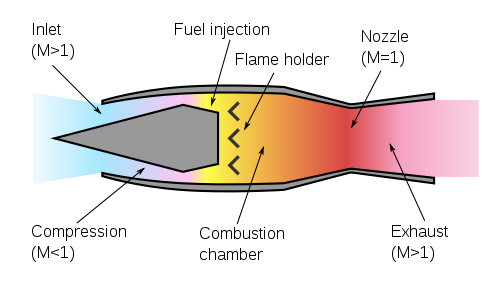
- The system utilises a solid fuelled air-breathing ramjet engine.
- Unlike solid-propellant rockets, the Ramjet takes up oxygen from the atmosphere during flight. Thus, it is light in weight and can carry more fuel.
- The SFDR has been developed by Defence Research and Development Laboratory, Hyderabad in collaboration with other DRDO laboratories such as Research Centre Imarat, Hyderabad and High Energy Materials Research Laboratory, Pune.
- Significance:
- It enables the missile to intercept aerial threats at very long range at supersonic speeds.
- At present, such technology is available only with a handful of countries in the world.
- Air-to-air missiles which use SFDR technology can achieve longer ranges as they do not require oxidisers (take oxygen from the atmosphere).
- The missile based on SFDR fly at supersonic speeds and high manoeuvrability ensures the target aircraft cannot get away.
What is the Defence Research and Development Organisation?
- About:
- DRDO works under the administrative control of the Ministry of Defence, Government of India.
- It is working to establish a world class science and technology base for India and provides Defence Services decisive edge by equipping them with internationally competitive systems and solutions.
- It was established in 1958 after combining the Technical Development Establishment (TDEs) of the Indian Army and the Directorate of Technical Development & Production (DTDP) with the Defence Science Organisation (DSO).
- It is responsible for carrying out the Integrated Guided Missile Development Programme (IGMDP).
- Some of the recent tests conducted by DRDO:
UPSC Civil Services Examination, Previous Year Questions (PYQs)
Q. With reference to Agni-IV Missile, which of the following statements is/are correct? (2014)
- It is a surface-to-surface missile.
- It is fuelled by liquid propellant only.
- It can deliver one-tonne nuclear warheads about 7500 km away.
Select the correct answer using the code given below:
(a) 1 only
(b) 2 and 3 only
(c) 1 and 3 only
(d) 1, 2 and 3
Ans: (a)
- Agni-IV is a nuclear-capable long-range ballistic missile of India, with a strike range of 4,000 km.

